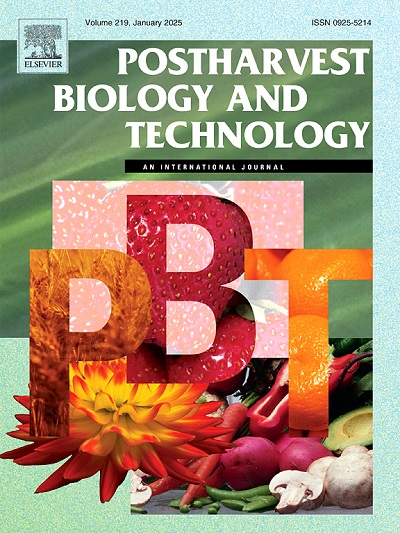利用计算机视觉和深度学习技术对传送带上的杏仁核进行分类和计数
IF 6.8
1区 农林科学
Q1 AGRONOMY
引用次数: 0
摘要
杏仁等农产品的分类和分拣是确保质量和满足市场需求的关键过程。分拣过程是用计算机视觉技术在机器上完成的。然而,这些机器的输出从来都不是100% %。从这些机器出来的产品最后在传送带上再次分类。在本研究中,使用深度学习和计算机视觉技术对传送带进行最终的分类和计数。为了便于研究,我们创建了一个包含1200张图像的自整理数据集,这些图像被分为三种不同的类别:完整的杏仁核、受损的杏仁核和破碎的杏仁壳。我们使用RGB和灰度图像数据集评估了四种CNN架构的性能:ResNet50、InceptionV3、VGG16和EfficientNetB3。其中,effentnetb3在RGB图像上的准确率最高,为99.44 %,在灰度图像上的准确率为98.33%。新样本的现场测试验证了模型的鲁棒性,在RGB图像上达到97.14 %的准确率,在灰度图像上达到95.71 %的准确率。这些结果证明了该方法在输送带上实现杏仁自动分类和分选的潜力,并利用其计数特征计算了分类机的操作精度。本文章由计算机程序翻译,如有差异,请以英文原文为准。
Sorting and counting of almond kernels on conveyor belt using computer vision and deep learning techniques
The classification and sorting of agricultural products, such as almonds, are critical processes in ensuring quality and meeting market demands. Sorting process is done in machines with computer vision technology. However, the output of these machines is never 100 %. The products coming out of these machines are finally sorted again on the conveyor belt. In this study, deep learning and computer vision techniques were used to perform the final sorting and counting on the conveyor belt. A self-curated dataset containing 1200 images divided into three distinct classes: whole almond kernels, damaged kernels, and broken shells was created to facilitate the study. We evaluated the performance of four CNN architectures: ResNet50, InceptionV3, VGG16, and EfficientNetB3 using both RGB and grayscale image datasets. Among these, EfficientNetB3 achieved the highest accuracy of 99.44 % with RGB images and 98.33 % with grayscale images. Field tests with new samples validated the model's robustness, achieving 97.14 % accuracy on RGB images and 95.71 % on grayscale images. These results demonstrate the potential of the proposed method to automate almond classification and sorting on the conveyor belt and calculate the operating accuracy of sortex machines with its counting feature.
求助全文
通过发布文献求助,成功后即可免费获取论文全文。
去求助
来源期刊

Postharvest Biology and Technology
农林科学-农艺学
CiteScore
12.00
自引率
11.40%
发文量
309
审稿时长
38 days
期刊介绍:
The journal is devoted exclusively to the publication of original papers, review articles and frontiers articles on biological and technological postharvest research. This includes the areas of postharvest storage, treatments and underpinning mechanisms, quality evaluation, packaging, handling and distribution of fresh horticultural crops including fruit, vegetables, flowers and nuts, but excluding grains, seeds and forages.
Papers reporting novel insights from fundamental and interdisciplinary research will be particularly encouraged. These disciplines include systems biology, bioinformatics, entomology, plant physiology, plant pathology, (bio)chemistry, engineering, modelling, and technologies for nondestructive testing.
Manuscripts on fresh food crops that will be further processed after postharvest storage, or on food processes beyond refrigeration, packaging and minimal processing will not be considered.
 求助内容:
求助内容: 应助结果提醒方式:
应助结果提醒方式:


